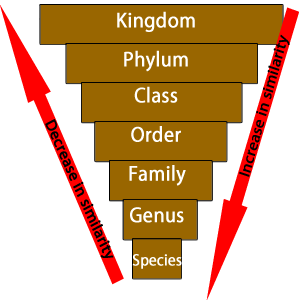
- provide information about an organism,
- information can be derived about an organism depending on its classification;
- information about organisms can be easily obtained,
- any new organism can be added in a predictable and systematic way.
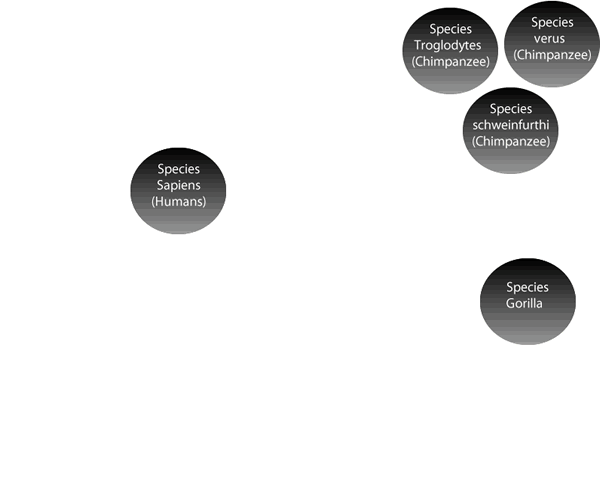
The animation on the left is simplified to show how the biological classification key is organised from species to kingdoms. It takes the kingdom Animalia as an example.
Species which have a great number of similarities are grouped into a genus. Species which share a common, immediate ancestor are placed in the same genus.
Different genera that contain animals with similar features are then grouped into a family.
Families are then grouped into an order.
Orders are then grouped into a class.
Classes are then grouped into a phylum.
Phyla are grouped into a kingdom.
Consider the animaion above
1) Which species are the most closely related
2) A genus is a more inclusive group than a phylum
3) Consider the evolutionary tree shown on the right.
a) Do Bonobos, Chimpanzees and Humans belong to the same genus?
b) Do Chimpanzees and Humans belong to the same genus?
c) Bonobos and Chimpanzees have 98.7% similarity with Human DNA. Does this make them part of the same species?
d) Both Chimpanzees and Humans share a common, immediate ancestor.
e) Chimpanzees and Bonobos are in the same genus. Why?
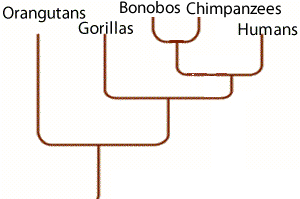
e) The three animals shown on the right show greater similarity at the level of
f) Which two animals are the most closely related?
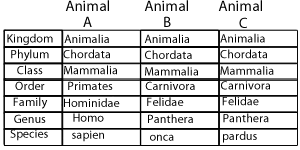
The five kingdom classification system was proposed by Robert Whittaker, an American biologist, in 1969.
- Monera
- Protista
- Fungi
- Plantae
- Animalia
In 1990, a new level of classification was proposed that was a higher order than kingdoms, known as domains.
6) Consider two organisms "A" and "B". Organism "A" is a Protist while organism "B" is a Moneran.
a) What are there similar features?
b) How do they differ?
7) According to the classification system above, what are the differences between plants and animals?
9) An organism is unicellular, has a cellulose cell wall and photosynthesizes. In what kingdom does it belong and why?
10) Two animals have been discovered on different continents at the same time by scientists who do not speak a common language. Describe an advantage of having a universal classification system?
11) Which one contains an animal's closest relatives?
12) Animals "X" and "Y" belong to the same family. Does this mean they also belong to the same genus?Explain

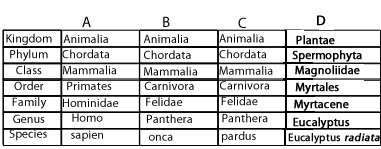
13) Consider the table on the left, "D" represents the common peppermint gum tree.
a) How many kingdoms are represented by the organisms listed in the table?
b) If we were adding a column to represent a protist, such as a paramecium, what taxa would be the same as for any of the organisms shown?
c) If we were adding a column to represent a chimpanzee which organisms would be its closest relative?
d) An animal "Y" belongs to the order carnivora would you expect it to belong to the genus panthera? Explain.
Continue with domains
Continue with an article
found on the BBC.
Continue with the binomial system of naming organisms.
Continue with insects in the backyard
Continue with taxa